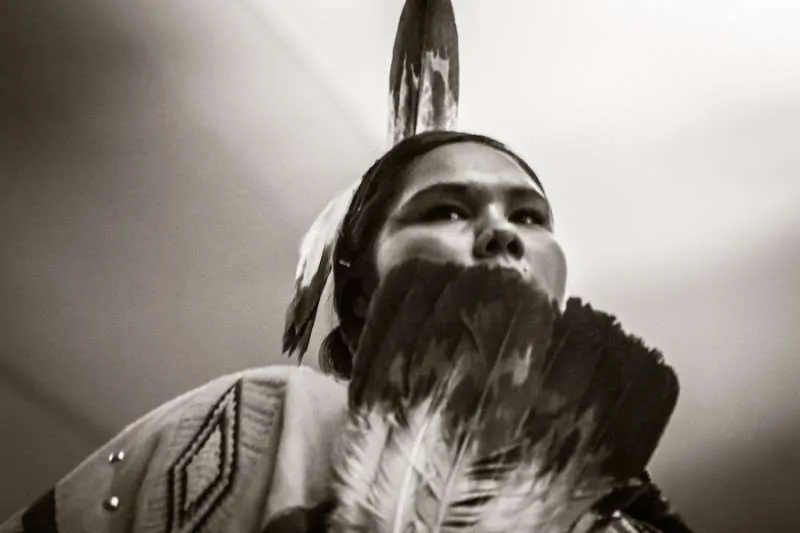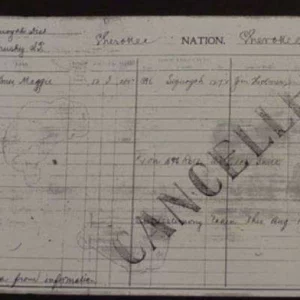Donovan Shortey from the Dineh is a well know photographer from Window Rock, Arizona. PowWows.com is honored to bring you this interview.
Tell me about yourself and your background? Yá'át'ééh, My name is Donovan Shortey. I am of the Kinyaa'aani clan, born for the Naakai dine'e clan. My maternal clan is the Tsekeehe clan and my paternal clan is Tabaaha. My maternal family is from Many Farms, Arizona and my paternal family is from Indian Wells, Arizona.
I am 32 years old and I grew up here in Window Rock, Arizona. My parents raised me both in a Navajo traditionalist and a secular environment. These two world view systems have influenced me tremendously and often conflicts with my photograhy which can often be seen in my images. Some people may claim that the Navajo belief system is quickly fading away. But I can assure you, it's alive and well. This is translated by all the taboos I have to observe when I take images here on the Navajo reservation, especailly in holy settings like a Kinaalda. The Navajo maturity ceremony for young Dineh girls.
With me having Navajo traditionalist in my family, I've been told a few times that advocating pan-indianism is as dangerous as American cultural assimilation. This is where my Powwow photography has conflicted with my traditionalist part of my family. But this does not prevent me from documenting everyone's experiences here on Dinetah (Navajoland).
One day I hope to find Hózhó with my photography. I don't want to worry about people or relatives dictating what I should photograph. I never mean disrespect for anyone for the traditions I photograph. I want to give access of our lifeways for our future generations. I think they deserve a glimpse of what their ancestors did when we lived.
How did you get involved in photography? My father. When my father was in the Korean war, he was introduced to photography by his fellow soldiers. He came back to the Navajo reservation with an interest in photography. Then he met my mother and they married. As you can imagine, being a newly wedded indigenous photographer on the Navajo reservation in the 1950's and 60's made you no money. So my father was compelled to find a well paying job with the state of Arizona and put his passion for photography on the side. But he kept his film negatives, cameras and photography books in our household for years.
With so many photography influences around me when I growing up, I never had interest in photography… until May 2011. That was the month and year my father passed away. I needed to grieve. I needed to vent. I need to do something to help me lift me from my despair. It was during the time of mourning that the topic of my father's photography came up. “Finally!” I remember telling myself. Something I can do to honor my father's memory and solve a “problem” that bugged me for nearly a decade.
That “problem”, was the lack of images that accurately portrayed modern indigenous life as seen through the search engines of the internet. If you search for “Native American” in different languages you will most likely be disappointed in what you find. Photography finally gave me a tool to fix this insulting problem.
Is photography your full time job? What else do you do for a living? No….not yet. I would love to find a foundation or grant what would allow me to document the indigenous cultures of the American southwest. I feel euphoric when I'm out in the field, capturing the light of all things. I forget all my problems, all my feelings and become immersed in other people's emotions. But to pay the bills I help maintain my sister's small business. I find Information technology and e-commerce solutions for her and get paid as an consultant. Once her business becomes bigger she intends to hire me as a full time Administrative employee.
Tips for others to get great Pow Wow photos? Stay low and dance. One of the reason why my powwow images are so distinguished is because I try to stay below the line of sight of my subjects. This projects them as very powerful entities. I say dance because just as you may “sing along” with your favorite song, you have to mentally “dance along” with your subjects. Songs have predictable lines of verses called refrains and just like the a song, the dancers have predictable steps they repeat. Once you find that good dancer with good foot work, stick with him or her. Then get close, stay low and wait for it, you are sure to get a great image.
What gear do you use? The equipment I use consists of a Canon EOS T3i, Canon EOS 6D, the Tamron AF 17-50mm F2.8 Zoom Lens, the Tamron SP AF 70-200mm F2.8 zoom lens, a Canon 50mm f/1.8 II prime lens and a Canon 430EX II Speedlite. I also have other miscellaneous gear, but everything I mentioned is my primary gear.
Tell us about your current photography projects. My photography primarily revolves around my tribe, Dineh (Navajo). So I try to capture unique cultural elements that are exclusive to the Navajo. One my current long term projects is the documentation of Dineh princess pageants that are hosted by schools on the Navajo reservation. Dineh pageants are similar to the Miss Navajo pageants, where the contestant's beauty isn't used as a factor in judging, just their knowledge of the Navajo language and culture.
My other ongoing project is donating Navajo related images to Wikimedia Commons for Navajo related Wikipedia articles.
Visit the Shorty Studios website to see more great photography.
Last Updated on January 15, 2024 by Paul G









